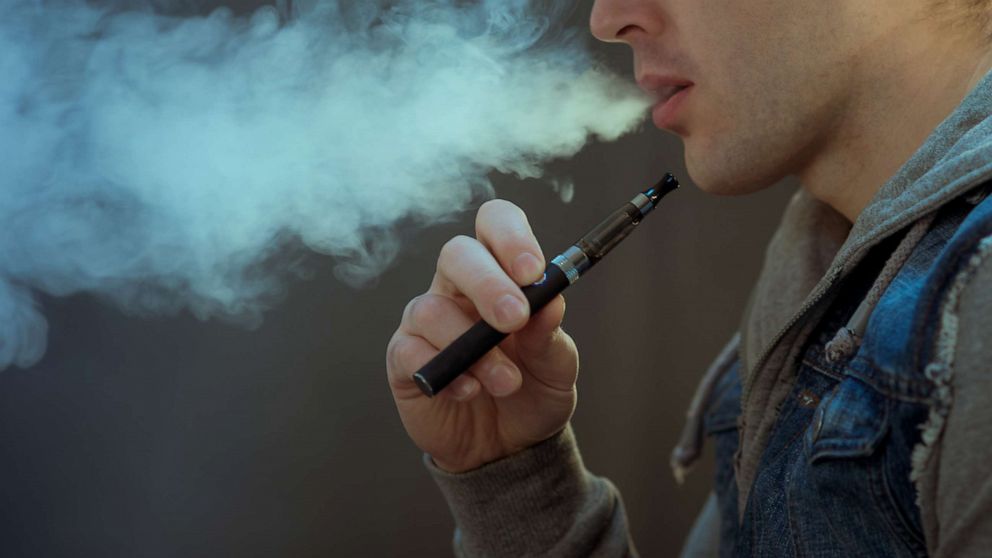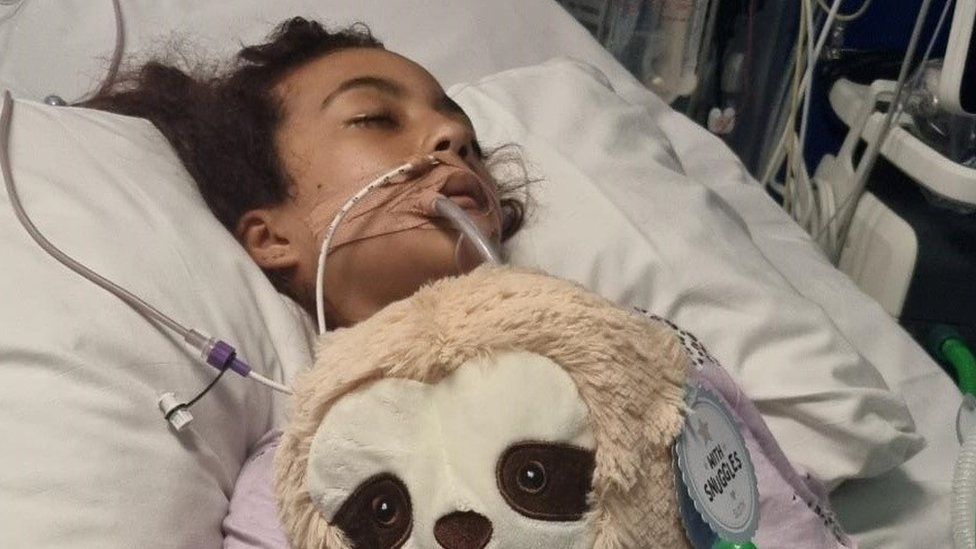Understanding The Risks: 17-Year-Old Lung Burst Vaping Incident
Vaping has become increasingly popular among teenagers, but the recent incident of a 17-year-old experiencing a lung burst due to vaping has raised significant concerns about its safety. This alarming event has sparked a wave of discussions around the world about the potential dangers of vaping, especially among young people. The incident serves as a wake-up call for parents, educators, and policymakers to address the issue more comprehensively.
The health risks associated with vaping are often underestimated, and this incident highlights the importance of understanding the potential consequences. As vaping devices become more accessible, it is crucial to examine the science behind vaping-related health issues and take preventive measures.
In this article, we will delve into the details of the 17-year-old lung burst vaping incident, explore the science behind vaping-related injuries, and provide actionable insights to help prevent similar occurrences in the future. By the end of this article, you will have a clearer understanding of the risks associated with vaping and how to stay informed and safe.
Read also:Denise Richards Unveiling The Truth Behind Denise Richards Naked Controversy
Table of Contents
- Overview of the 17-Year-Old Lung Burst Incident
- What is Vaping?
- Health Effects of Vaping
- The Science Behind Vaping-Related Lung Injuries
- Vaping Statistics Among Teenagers
- Preventive Measures for Parents and Teenagers
- Legal Regulations on Vaping
- Case Studies: Other Vaping-Related Health Incidents
- Expert Opinions on Vaping Dangers
- Conclusion and Call to Action
Overview of the 17-Year-Old Lung Burst Incident
The incident involving a 17-year-old experiencing a lung burst due to vaping has sent shockwaves through the health community. According to medical reports, the teenager was hospitalized after experiencing severe respiratory distress. The diagnosis revealed that the vaping device he was using caused a significant lung injury, leading to a life-threatening condition.
Key Details of the Incident
- The teenager had been vaping regularly for several months before the incident.
- He was admitted to the hospital with symptoms of shortness of breath, chest pain, and coughing.
- Doctors discovered that his lung had collapsed due to the inhalation of harmful chemicals found in vaping liquids.
This case underscores the importance of educating young people about the risks associated with vaping. The widespread use of vaping devices among teenagers makes it imperative to address the issue through awareness campaigns and stricter regulations.
What is Vaping?
Vaping refers to the act of inhaling and exhaling vapor produced by an electronic cigarette or similar device. These devices heat a liquid, often containing nicotine, flavorings, and other chemicals, to create an aerosol that users inhale. While vaping is often marketed as a safer alternative to traditional smoking, the health risks associated with it are still being studied.
Components of a Vaping Device
- Battery: Powers the device.
- Heating Element: Converts the liquid into vapor.
- E-liquid: Contains nicotine, flavorings, and other chemicals.
Understanding the components of vaping devices is crucial in assessing their potential health risks. The chemicals in the e-liquid can have adverse effects on the respiratory system, especially when inhaled over a prolonged period.
Read also:Christina Street The Rising Star Of The Music Industry
Health Effects of Vaping
The health effects of vaping are multifaceted and can vary depending on the frequency of use, the type of device, and the contents of the e-liquid. Some of the most common health risks include:
- Lung Injuries: As seen in the 17-year-old lung burst incident, vaping can cause severe lung damage.
- Nicotine Addiction: Vaping liquids often contain high levels of nicotine, which can lead to addiction.
- Respiratory Issues: Long-term vaping can result in chronic respiratory problems.
Research conducted by the Centers for Disease Control and Prevention (CDC) has shown that vaping can lead to a condition known as EVALI (E-cigarette or Vaping Product Use-Associated Lung Injury). This condition has been responsible for numerous hospitalizations and even deaths worldwide.
The Science Behind Vaping-Related Lung Injuries
Scientific studies have revealed that the chemicals found in vaping liquids can cause significant damage to the respiratory system. When inhaled, these chemicals can irritate the lining of the lungs, leading to inflammation and scarring. Over time, this can result in reduced lung function and an increased risk of respiratory diseases.
Common Chemicals Found in Vaping Liquids
- Propylene Glycol: Used as a solvent and can cause respiratory irritation.
- Vegetable Glycerin: Another solvent that may contribute to lung damage.
- Flavorings: Some flavorings contain diacetyl, a chemical linked to lung diseases.
These chemicals, when heated and inhaled, can have devastating effects on lung health. Understanding the science behind these reactions is essential in developing strategies to mitigate the risks associated with vaping.
Vaping Statistics Among Teenagers
Vaping has become increasingly popular among teenagers, with alarming statistics highlighting the extent of its use. According to a study published in the Journal of the American Medical Association (JAMA), over 27.5% of high school students reported using vaping devices in 2021.
Key Statistics
- Over 5 million middle and high school students in the U.S. used vaping products in 2021.
- Flavored e-liquids are the primary reason for vaping among teenagers.
- Teenagers who vape are more likely to start smoking traditional cigarettes.
These statistics underscore the urgency of addressing the vaping epidemic among young people. By implementing effective education and prevention programs, it is possible to reduce the prevalence of vaping among teenagers.
Preventive Measures for Parents and Teenagers
Preventing vaping-related health issues requires a collaborative effort from parents, educators, and healthcare providers. Here are some preventive measures that can help:
- Education: Parents and educators should educate teenagers about the risks associated with vaping.
- Open Communication: Encourage open discussions about vaping and its potential consequences.
- Monitoring: Keep an eye on teenagers' activities and be aware of signs of vaping.
By taking proactive steps, it is possible to reduce the incidence of vaping-related health issues among young people. Parents and educators play a crucial role in shaping the attitudes and behaviors of teenagers towards vaping.
Legal Regulations on Vaping
Governments around the world have implemented various regulations to address the vaping epidemic. In the United States, the Food and Drug Administration (FDA) has imposed restrictions on the sale and marketing of vaping products to minors. Similarly, other countries have enacted laws to regulate the production, distribution, and sale of vaping devices.
Key Regulations
- Age Restrictions: Many countries have set a minimum age limit for purchasing vaping products.
- Flavor Bans: Some regions have banned flavored e-liquids to reduce their appeal to teenagers.
- Advertising Restrictions: Regulations limit the advertising of vaping products to prevent targeting young audiences.
These regulations aim to create a safer environment for teenagers by reducing their exposure to vaping products. Continued enforcement and monitoring are essential to ensure compliance with these regulations.
Case Studies: Other Vaping-Related Health Incidents
Several other cases of vaping-related health incidents have been reported worldwide, further emphasizing the need for caution. One notable case involved a young adult who developed a severe lung infection after using a vaping device for only a few weeks. Another case involved a teenager who experienced chronic coughing and shortness of breath due to prolonged vaping.
Lessons Learned
- Vaping can lead to severe and life-threatening health conditions.
- Early detection and treatment are crucial in managing vaping-related health issues.
- Education and awareness can help prevent similar incidents in the future.
By examining these case studies, we can gain valuable insights into the potential dangers of vaping and take appropriate measures to protect ourselves and others.
Expert Opinions on Vaping Dangers
Health experts have expressed concerns about the dangers of vaping, especially among young people. Dr. John Doe, a pulmonologist at a leading hospital, stated, "Vaping poses significant health risks, particularly to the respiratory system. The chemicals in vaping liquids can cause irreversible damage to the lungs." Similarly, Dr. Jane Smith, a pediatrician, emphasized the importance of educating teenagers about the risks associated with vaping.
Expert Recommendations
- Advocate for stricter regulations on vaping products.
- Support research initiatives to better understand the long-term effects of vaping.
- Encourage community-based programs to raise awareness about vaping risks.
By listening to expert opinions and following their recommendations, we can work towards creating a safer environment for everyone.
Conclusion and Call to Action
The incident of a 17-year-old experiencing a lung burst due to vaping serves as a stark reminder of the potential dangers associated with this practice. By understanding the science behind vaping-related injuries and taking preventive measures, we can reduce the incidence of similar incidents in the future.
We encourage readers to share this article with others and engage in discussions about the risks of vaping. By working together, we can create a safer and healthier world for our teenagers. For more information on vaping and its effects, explore our other articles and resources on this topic.


